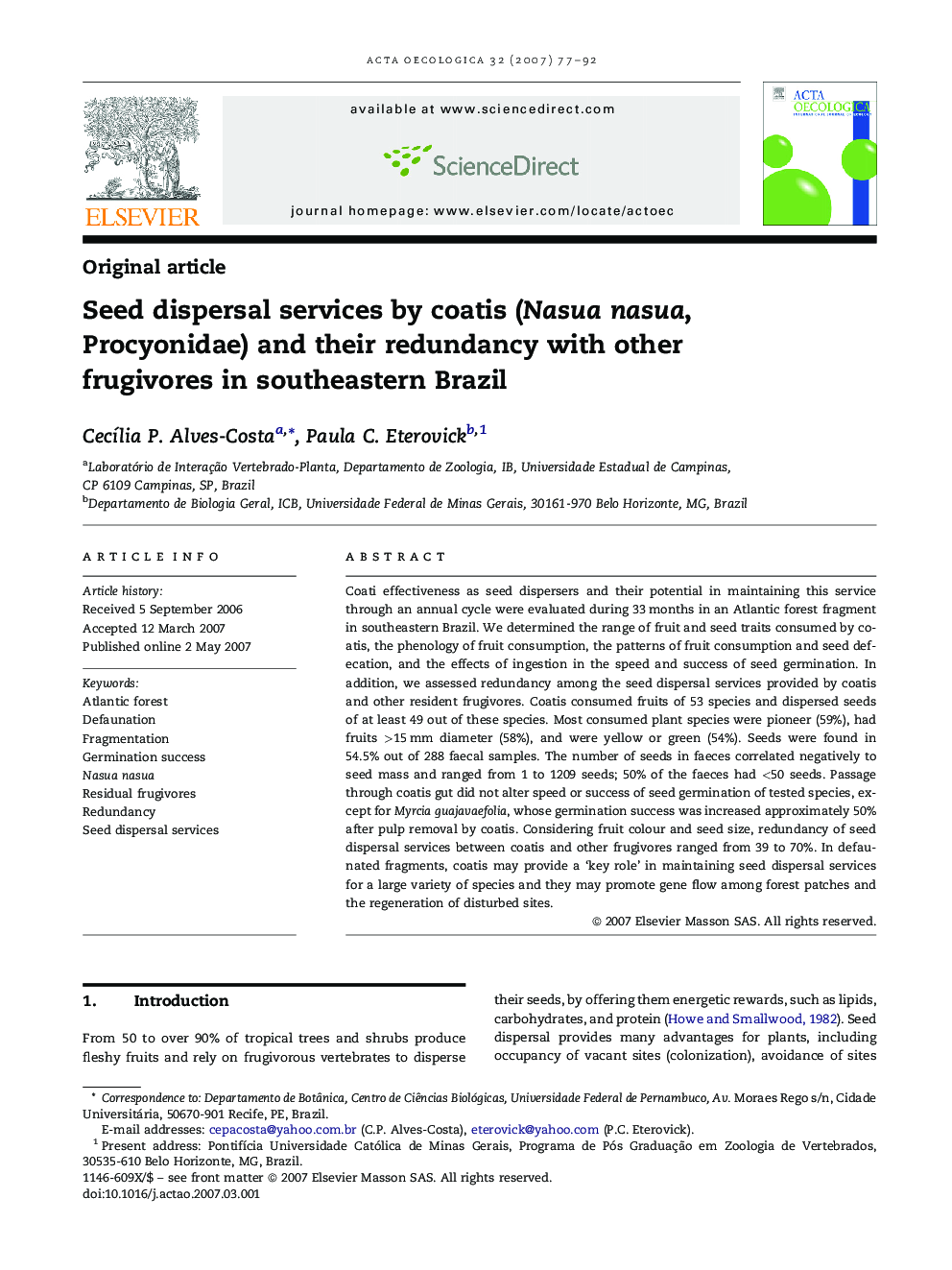| Article ID | Journal | Published Year | Pages | File Type |
|---|---|---|---|---|
| 4381620 | Acta Oecologica | 2007 | 16 Pages |
ABSTRACTCoati effectiveness as seed dispersers and their potential in maintaining this service through an annual cycle were evaluated during 33 months in an Atlantic forest fragment in southeastern Brazil. We determined the range of fruit and seed traits consumed by coatis, the phenology of fruit consumption, the patterns of fruit consumption and seed defecation, and the effects of ingestion in the speed and success of seed germination. In addition, we assessed redundancy among the seed dispersal services provided by coatis and other resident frugivores. Coatis consumed fruits of 53 species and dispersed seeds of at least 49 out of these species. Most consumed plant species were pioneer (59%), had fruits >15 mm diameter (58%), and were yellow or green (54%). Seeds were found in 54.5% out of 288 faecal samples. The number of seeds in faeces correlated negatively to seed mass and ranged from 1 to 1209 seeds; 50% of the faeces had <50 seeds. Passage through coatis gut did not alter speed or success of seed germination of tested species, except for Myrcia guajavaefolia, whose germination success was increased approximately 50% after pulp removal by coatis. Considering fruit colour and seed size, redundancy of seed dispersal services between coatis and other frugivores ranged from 39 to 70%. In defaunated fragments, coatis may provide a ‘key role’ in maintaining seed dispersal services for a large variety of species and they may promote gene flow among forest patches and the regeneration of disturbed sites.
